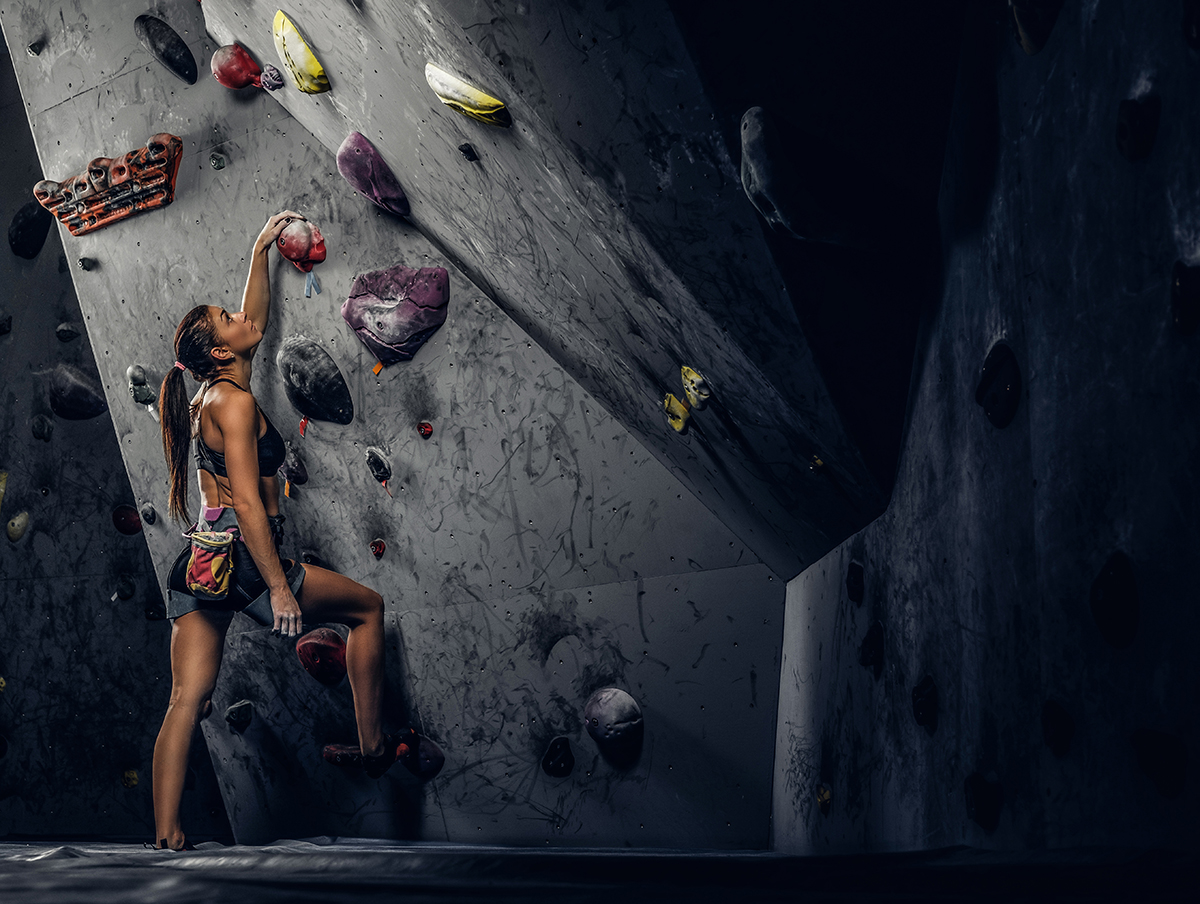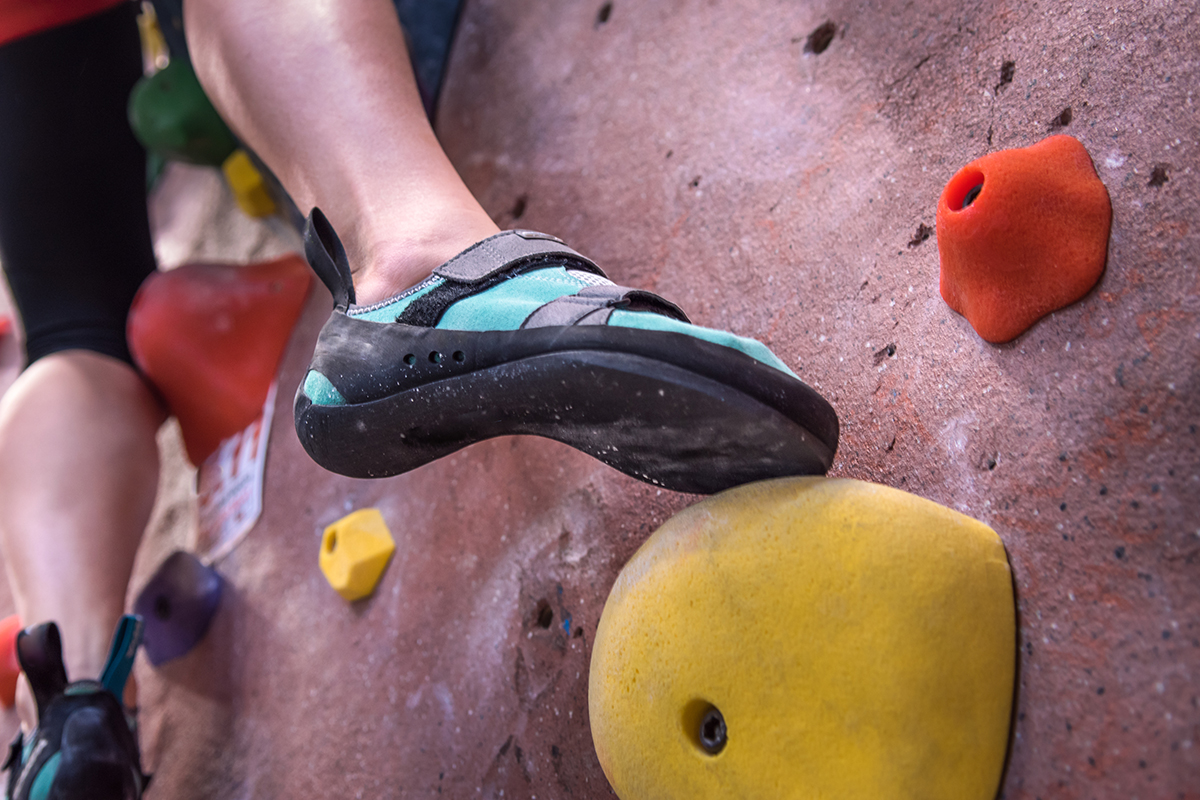Everyone is a beginner at some point in their life. Being a beginner can be scary. There are many things you still have to learn. However, it’s also exciting because there’s a lot of room for growth. If you’re a beginner boulderer, you may be scavenging the internet for tips and tricks to avoid making common mistakes (maybe that is how you ended up clicking on this article). What do I wear or don’t wear? How do I know where to start and finish the climb? How do I fall without looking weird? What is proper etiquette in the gym? Any of the questions and more may be rifling through your mind as you start your bouldering journey. We’ve all been there as new climbers, sharing many of the same concerns, and we want you to have the confidence of a pro when you walk into the gym. Here are the top beginner bouldering blunders and how to successfully avoid them like a pro.
Beginner Boulder Blunders
Wearing Your Chalk Bag

When climbing ropes, people clip their chalk bags to their waist to reapply chalk when they are 20 feet off the ground. With bouldering, you’ll rarely be on the wall for over a minute, making it unnecessary to bring your chalk bag with you. Chalking up before you begin a boulder provides enough chalk to finish the problem. If you boulder with a chalk bag, you risk causing a chalk explosion on the mats, which can be challenging to clean up without a vacuum. If this does happen, no one will yell at you, but you may get some cringes and heads quickly turning away from the scene of the crime. So, it’s better to be safe and leave your chalk bag on the mat (and not under where climbers may fall) when you’re climbing.
Not Looking Up When Walking on the Mats
Please, if you forget everything else, look at the top of the boulder walls when moving to a different section of the gym. The last thing anyone wants is a collision between someone dropping down or falling off a climb onto someone else. The risk of injury to both parties is extensive, and it’s always a little embarrassing to have a seasoned climber shout at you, “Watch out!” Be aware of what’s going on around you and keep your eyes open.
Falling Improperly
Arguably, the worst bouldering blunder is the beginner climber who leaves the gym in a wheelchair because they’ve sprained, strained, or broken an ankle or knee. Before your first bouldering session, gym staff will teach you the proper falling technique – land with bent knees, immediately dropping to your butt and rolling onto your back. This technique decreases the impact on your ankles and knees. Too many beginner climbers forget the technique amid the panic of being pumped or realizing how far they are from the ground. Instead, they drop or fall with straight legs, allowing all their ankles and knees to absorb all the impact. Do that repeatedly, and you’re asking for an injury.
Only Using the Side Edge of Your Shoes
Beginner climbers like to turn their toes inward or outward and place the entire inside edge or outside edge of their foot on the climbing holds. From their perspective, it provides more contact with the footholds. However, it’s incredibly inefficient for generating power. You want to place your toes. When you stand up, think about pushing your weight into your toes as if you were trying to stand on your tiptoes and force the hold to fall off the wall. This technique change will drastically improve your climbing and ability to use smaller footholds effectively.

Not Upgrading Your Shoes
If you’re a beginner climber, but committed to sticking with it, you have to ditch the rental shoes and buy a pair of rock climbing shoes. Rental shoes are made from inexpensive, soft rubber and feature a universal shape. A great rock climbing shoe fits the shape of your foot and uses high-quality rubber. You don’t need to buy an advanced, $200+ pair. Even upgrading to a neutral shoe designed with beginners in mind (e.g., Black Diamond Momentums or La Sportiva Tarantulas) will provide a better experience than rentals.
Climbing with Bent Arms
The only thing climbing with bent arms will guarantee is rapid muscle exhaustion. Try relaxing and straightening your arms to balance the load between your skeletal frame and muscles. Keep a slight bend in your elbow to prevent hyperextending the joint or straining any tendons, but there’s no need to keep your arms bent at 90 degrees on every move. It’s okay to bend your arms to engage your muscles when you need to generate a lot of power or lock off to reach the next hold.
Overgripping
Like climbing with bent arms, overgripping is an excellent way to exhaust yourself only a few climbs into your climbing session. You’re likely to get “flash pumped,” which is characterized by a sudden and intense buildup of lactic acid in your forearms. Due to the intensity of a flash pump, it can be challenging to recover, and your session may be prematurely ended. To avoid this situation, focus on relaxing your grip on the climbing holds. You want to ensure your grip is secure, but you don’t need to death grip each hold. Friction is your friend, and there are ways to position your center of gravity to balance your weight between your arms and legs.
Equipped with the knowledge of the most common beginner bouldering blunders and what to do instead, it’s time to head to the climbing gym and put the tools into practice. Remember, don’t wear your chalk bag, look up when changing locations, fall properly, use your toes, invest in climbing shoes, straighten your arms, and relax your grip. Perhaps you could allot time to try on some climbing shoes before or after your next session? Happy climbing!
